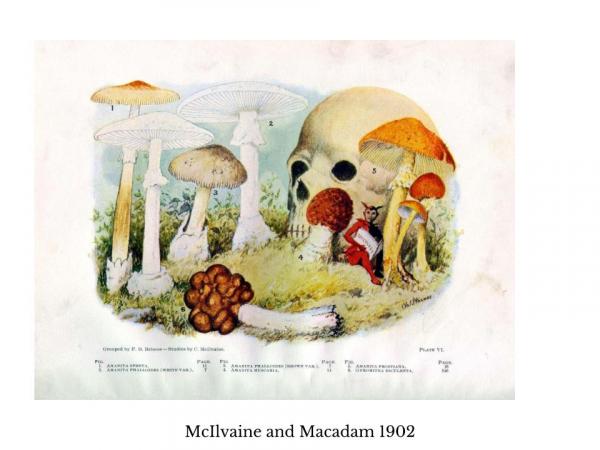EEB Thursday Seminar: The biogeography of body size: using population genomics to delineate individuals in the native and invasive ranges of the death cap fungus
Anne Pringle, Professor, Depts of Botany and Bacteriology, University of Wisconsin-Madison
The dispersal and biogeography of fungi are poorly understood, in part because individuals grow hidden within substrates and are difficult to see or count. The fungus Amanita phalloides is deadly poisonous and a rich literature records its history in Europe and America; the death cap is invasive in California. After briefly describing its history in North America, I will talk about the population genomics data we are using to delineate individuals (or genets). By collecting and genotyping mapped populations of fungi from California, Europe, and the Northeast U.S., we are discovering that most mushrooms in a habitat are unique genetic individuals. Data suggest that genets of A. phalloides are typically less than 1 m in diameter. The pattern holds across California, Europe, and the Northeast, and is the same for sites where populations are assumed to be young, and sites where A. phalloides has been collected for over 30 years. In fact, data collected at different time points from the same sites evince the same structures, even when populations are collected 10 years apart. There appears to be no correlation between body size and geographic origin or age of a population, moreover, dispersal appears highly local: most spores appear to fall just next to their source.
View YouTube video of seminar: https://youtu.be/tjYITvG7P-4
View YouTube video of seminar: https://youtu.be/tjYITvG7P-4
| Building: | Biological Sciences Building |
|---|---|
| Website: | |
| Event Type: | Lecture / Discussion |
| Tags: | Biology |
| Source: | Happening @ Michigan from Ecology and Evolutionary Biology, Program in Biology, EEB Thursday Seminars, Research Museums Center |


